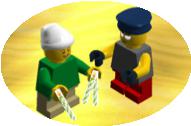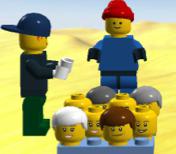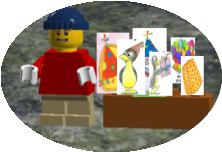Or search by topic
Number and algebra
Geometry and measure
Probability and statistics
Working mathematically
Advanced mathematics
For younger learners
How Do You See It?



- Problem
- Getting Started
- Student Solutions
- Teachers' Resources
How Do You See it?
Here are some little problems.
How would you put them on paper using
- words?
- pictures?
- numbers?
- objects?
- other ways?
 Zoe had these three sweets.
Zoe had these three sweets.
Her friend Rajneet gave her two more. How many has Zoe got now?
 Karala had 8 dolls.
Karala had 8 dolls.
She gave 3 of them to her little sister. How many dolls has Karala got now?
 It was Toby's birthday and he had 6 birthday cards.
It was Toby's birthday and he had 6 birthday cards.
The postman brought some more cards for him and Toby now has 9 cards.
How many cards did the postman bring to Toby?
 Si had 8 balloons looking bright and bouncy.
Si had 8 balloons looking bright and bouncy.
Some then popped and he only had 5 left that were bright and bouncy.
How many had popped?
Some children were walking to school together.
Three more joined them.
Now there were 9 children altogether.
How many were walking together first of all?
Marcus had some coins in his pocket.
Sadly he lost 7 of them, now he only
has three coins. How many coins
were there before he lost them?
Why do this problem?
Possible approach
Key questions
Possible extension
Possible support
You may also like
Biscuit Decorations
Andrew decorated 20 biscuits to take to a party. He lined them up and put icing on every second biscuit and different decorations on other biscuits. How many biscuits weren't decorated?

